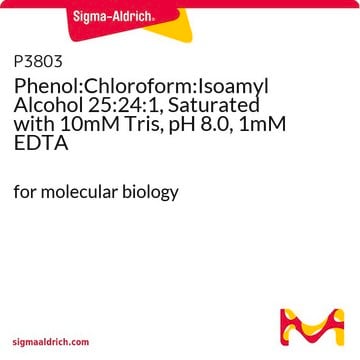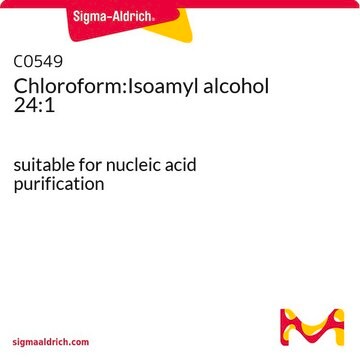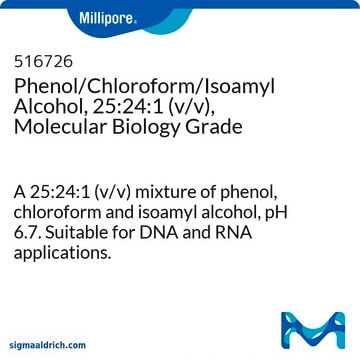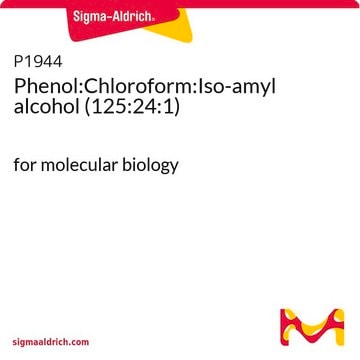P4557
Phenol solution
Equilibrated with 10 mM Tris HCl, pH 8.0, 1 mM EDTA, BioReagent, for molecular biology
Synonym(s):
Tris-equilabrated Phenol
About This Item
Recommended Products
grade
for molecular biology
product line
BioReagent
Assay
≥99.0% (GC)
form
liquid
pH
7.7-8.1 (25 °C)
storage temp.
2-8°C
SMILES string
Oc1ccccc1
InChI
1S/C6H6O/c7-6-4-2-1-3-5-6/h1-5,7H
InChI key
ISWSIDIOOBJBQZ-UHFFFAOYSA-N
Gene Information
human ... GABRA1(2554)
Looking for similar products? Visit Product Comparison Guide
General description
Application
- as a component of the digestion reaction mix to prepare RNase-free plasmids for in vitro translation in a rabbit reticulocyte lysate
- for extraction of DNA from Arabidopsis thaliana Rosette leaves
- in the extraction of DNA from blood on preservation paper by standard phenol-chloroform protocol
- as a component of extraction buffer to extract RNA from fruit pulp
- for the extraction of protein from roots
- for the isolation of fecal DNA
- for the extraction of caged RNA
Biochem/physiol Actions
Components
- 1 bottle Tris-equilabrated Phenol (product number P4557)
- Equilibration Buffer (product B5658)
related product
Signal Word
Danger
Hazard Statements
Precautionary Statements
Hazard Classifications
Acute Tox. 3 Dermal - Acute Tox. 3 Inhalation - Acute Tox. 3 Oral - Aquatic Chronic 2 - Eye Dam. 1 - Muta. 2 - Skin Corr. 1B - STOT RE 2
Target Organs
Nervous system,Kidney,Liver,Skin
Storage Class Code
6.1A - Combustible acute toxic Cat. 1 and 2 / very toxic hazardous materials
WGK
WGK 2
Flash Point(F)
Not applicable
Flash Point(C)
Not applicable
Personal Protective Equipment
Certificates of Analysis (COA)
Search for Certificates of Analysis (COA) by entering the products Lot/Batch Number. Lot and Batch Numbers can be found on a product’s label following the words ‘Lot’ or ‘Batch’.
Already Own This Product?
Find documentation for the products that you have recently purchased in the Document Library.
Customers Also Viewed
Our team of scientists has experience in all areas of research including Life Science, Material Science, Chemical Synthesis, Chromatography, Analytical and many others.
Contact Technical Service









